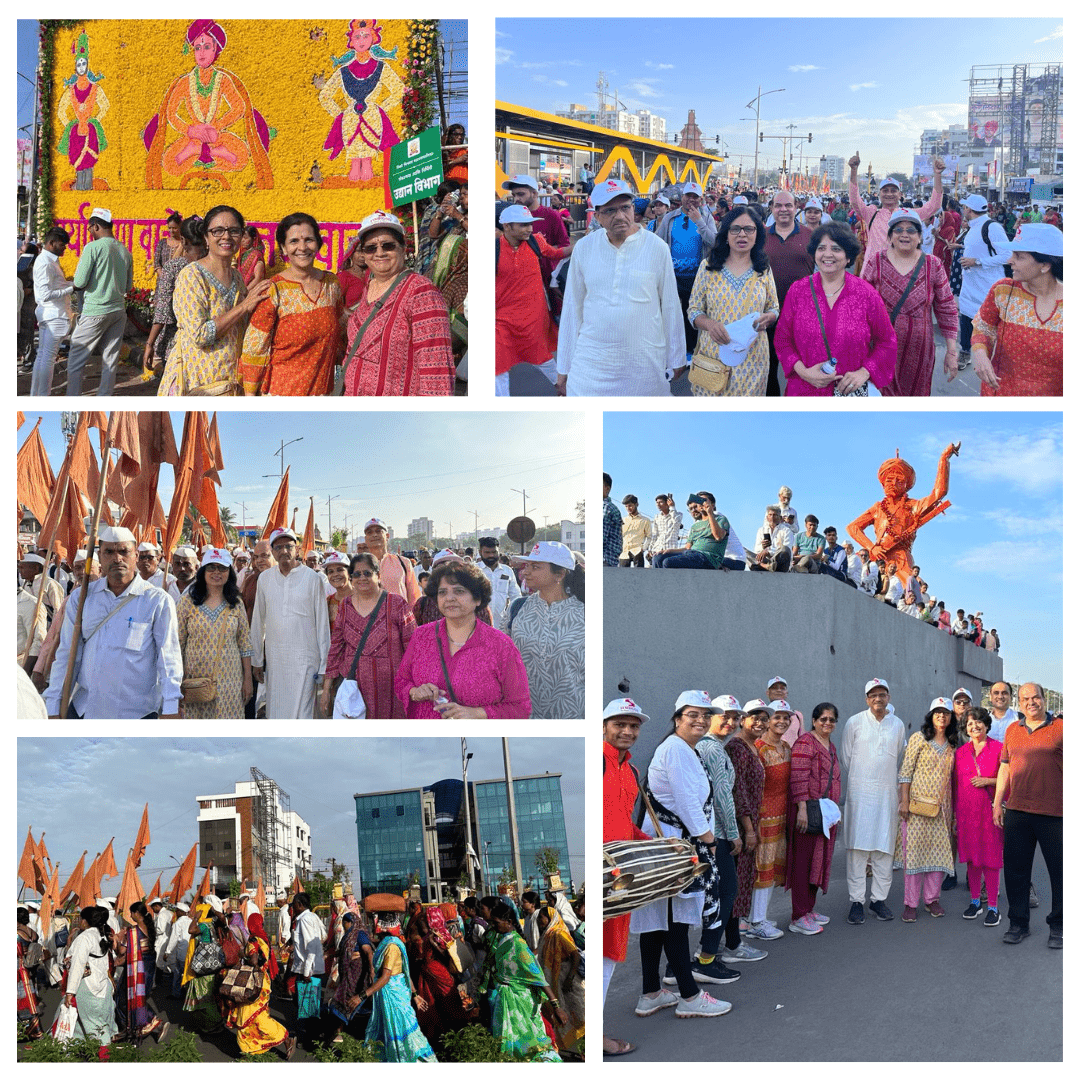
I had been planning and looking forward to today for the past many weeks, and it finally happened. Today, I walked with the Wari, and it was exhilarating, to say the least. When thousands of people walk together with a common thought, their positivity multiplies manifolds, and I wanted to contribute to it while also soaking in it.
To give a brief about this procession, every year, lakhs of devotees (Warkaris) across Maharashtra take a pilgrimage on foot to the Vithoba temple in Pandharpur at the onset of the monsoon. The procession (Wari) has evolved over the years, as have the associated legends and its unique organization and management systems. This 800-year-old tradition is a distinctive part of the Maharashtrian culture. Four processions take place in the months of Chaitra (March-April), Ashadh (June-July), Kartik (October-November) and Magh (January-February). Of these, the Ashadhi Ekadashi Wari is the most popular.
For Symbiosis, it is a matter of honour to be able to contribute to this journey of 250 km by providing medical assistance for the past 23 years. Beyond the physical support of ambulances and motor bikers, nurses, paramedics and students from the Faculty of Medical and Health Sciences wholeheartedly contribute their bit in caring for the warkaris. Their enthusiasm and bhakti are reflected in the arduous task that they undertake. Throughout the journey, they keep singing songs in praise of their mauli, and it is invigorating. I join the Wari each year with my husband, Dr. Rajiv, and several Directors of Symbiosis. I walk about 10 km each year, but instead of feeling exhausted, I feel a surge of energy.
People (the warkari) from different walks of life, rich and poor, of all ages, walk the Wari. One wonders how this is managed without any law and order problem. You never see security guards or police officers supervising this longest-ever procession of people who walk for days. Instead, fellowmen from various villages, towns and cities through which this Wari goes provide food, shelter and water to the warkaris. The procession’s seamlessness makes one wonder what kind of logistic management is done here. It is indeed a ‘case study’ to be discussed in B school classrooms!
This tradition is followed in Maharashtra, and I am sure many such pilgrimages take place across India. It is a beautiful and enriching aspect that we must introduce the younger generation to. Following our rich traditions and culture creates a strong family bond and helps our children learn the value system and benefits of creating a healthier society. We can make our children aware of them, and in due course of time, they will realize the value of these practices and understand the importance of collective reverence for the divine.
In a world that is getting fragmented, let us create stronger bonds of brotherhood by taking the spiritual path. Let us make the younger generation aware of the goodness that still exists in society and not deviates from the path of moral consciousness.